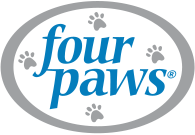Dog Safety in the Great Outdoors
The great outdoors is an important place for your dog. It is their playpen, bathroom, and laboratory where they carry out all sorts of exciting experiments. They dig up dirt, burn off excess energy, and meet new friends including bees, squirrels, and birds.
While these may sound potentially harmful, don’t worry—there are plenty of dog safety precautions you can take to make sure your pet has safe, enjoyable outdoor experiences. Ideally, your dog should be outside only when you are, and puppies should never be left alone. The next time your dog is exploring nature—including your own backyard—keep in mind these common dangers and safety tips:
Outdoor Dangers
ANIMALS
Depending on where you live, your dog may encounter bears, skunks, porcupines, alligators, hornets, poisonous toads, cats, rabid animals, and bigger, more aggressive dogs. Because many of these critters are not deterred by a sturdy fence or other barricade, it is essential to keep an eye on your dog when they are outside so you are prepared to quickly remove them from dangerous situations.
PLANTS
Your dog can encounter a wide variety of poisonous plants outdoors, such as almond, daffodil, Easter lily, hibiscus, hydrangea, lily of the valley, milkweed, mistletoe, morning glory, shamrock, and many more.
In addition to these deadly plants, the friendly garden mulch or compost pile can contain dangerous molds, bacteria, or toxins, so it’s best to keep your dog away from it. For example, the once trendy cocoa bean mulch, like chocolate, can be toxic to dogs who are attracted to its flavor.
HEAT AND COLD
Dogs suffer severely from temperature extremes; some breeds are more sensitive to heat and others to cold. No dog of any breed has fun standing around alone in a yard shivering or panting. Be sure to check the weather before letting your dog outside for an extended period, and make sure they have plenty of water. In the winter, their water should not be able to freeze so they can still take a drink when thirsty. If the outdoor temperature is too hot or cold for you to be comfortable, it’s too severe for your dog.
Dog Safety Precautions
CURB BOREDOM AND LONELINESS
Dogs were bred to be human companions and dislike being alone. Lonely, bored dogs are more apt to bark, chew, dig holes under the fence, chase bicycles, and escape.
If your dog spends part of the day in the yard, provide plenty of interactive toys to occupy them within the safety of your yard.
UPDATE FENCING
Fence in your yard. Wanderlust can seize even the happiest, most secure dog, so a sturdy fence is essential to dog safety. If your dog likes to dig, you may need to pour a concrete curb along the base of the fence or bury the fence several inches below ground. You can also bury cinder block a foot underground by the fence to discourage digging.
Although some swear by electronic fences, a conventional fence should do the job. The latter will not only keep your dog safe, but it will also keep other dogs and neighborhood bullies out. Some dogs will run through an electronic fence, and once they’re out, they tend to stay out because they are unwilling to risk another shock. A standard fence doesn’t require electricity, special collars, or electric shocks to confine a dog. Be sure to padlock all gates to keep out dognappers and curious children.
On trips or in places there are no fences, you may need to use dog tie-out cables. Use a stake, such as the easily portable Four Paws® Walk About® Spiral Tie-Out Stake, to temporarily tether your dog when you are on a trip or outing. Another option is a large outdoor dog kennel if you are not permitted to put up any permanent structures in your neighborhood.
WATCH YOUR DOG NEAR THE POOL
Always supervise your dog around swimming pools. Pools should be fenced off from curious dogs, especially when the solar cover is on. Solar covers cannot support a medium-sized dog’s weight, and if your dog gets trapped underneath, they could drown. Even if there is no cover, some dogs cannot swim. Just like humans, dogs can hit their head and be unable to swim. Watch your dog around the pool just like you would watch a child.
PROVIDE PLENTY OF WATER
Make sure that your dog has plenty of fresh water. An automatic watering dish is a must for all but the briefest outdoor stays.
Keeping these tips in mind, you and your dog will be prepared for a fun and safe outdoor experience!










